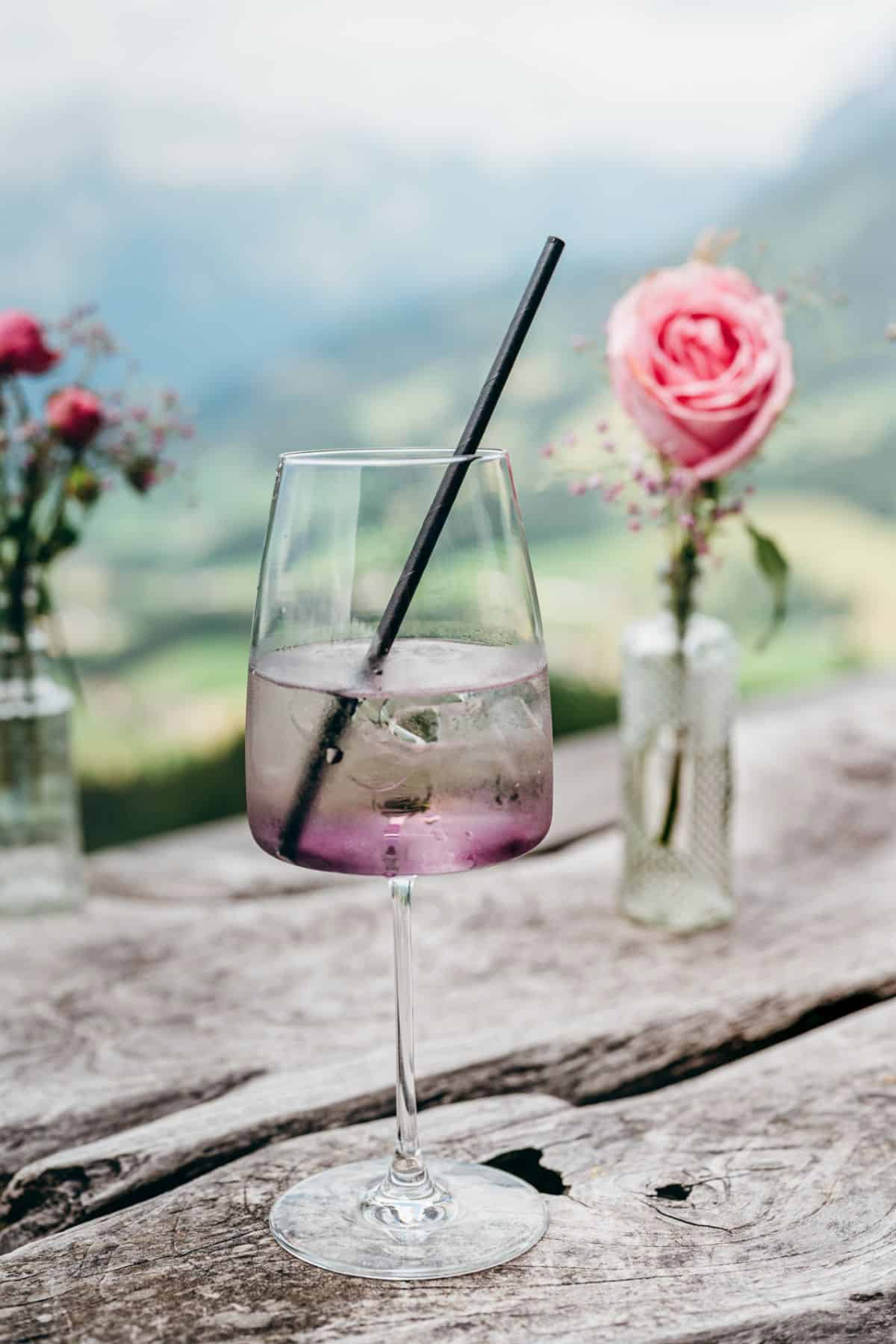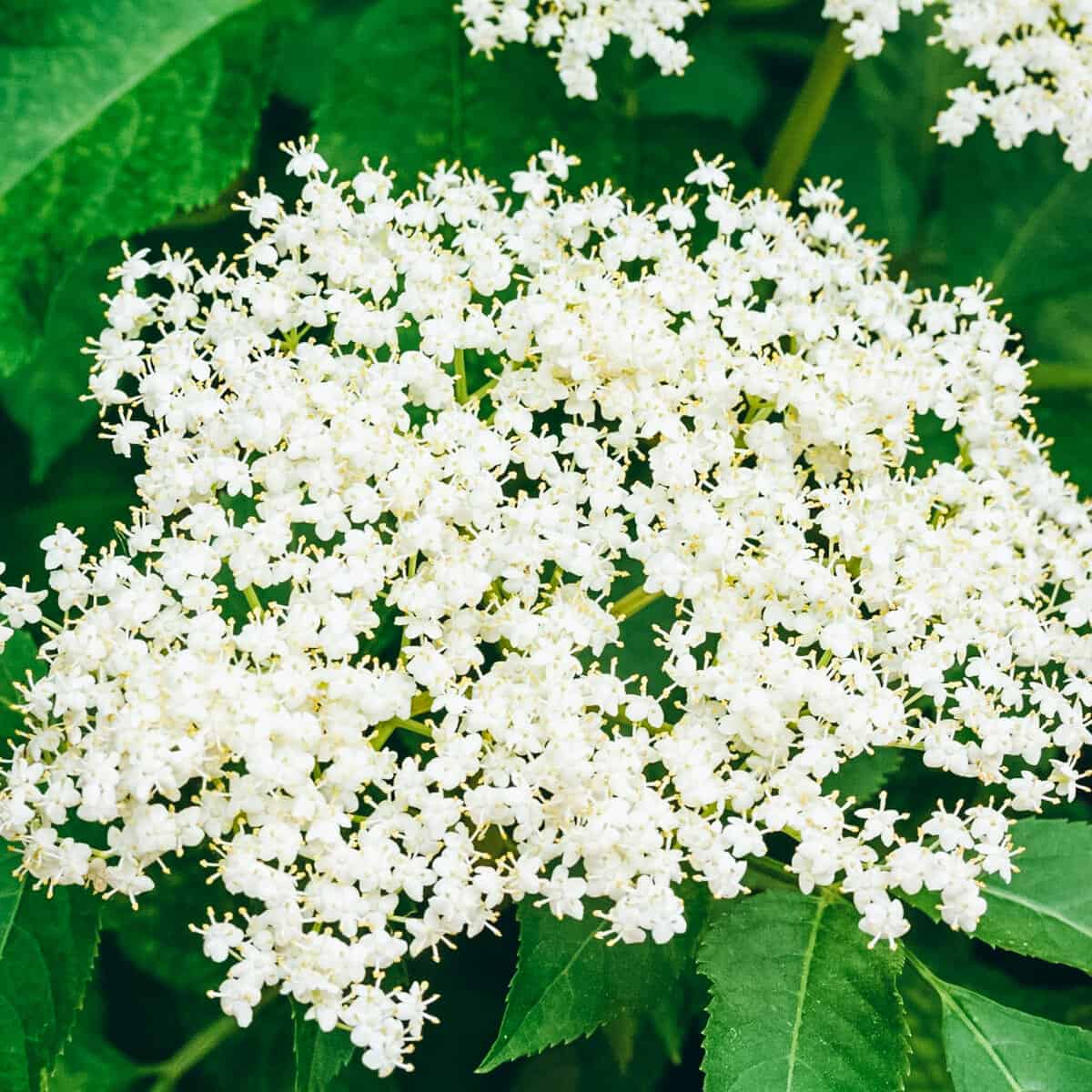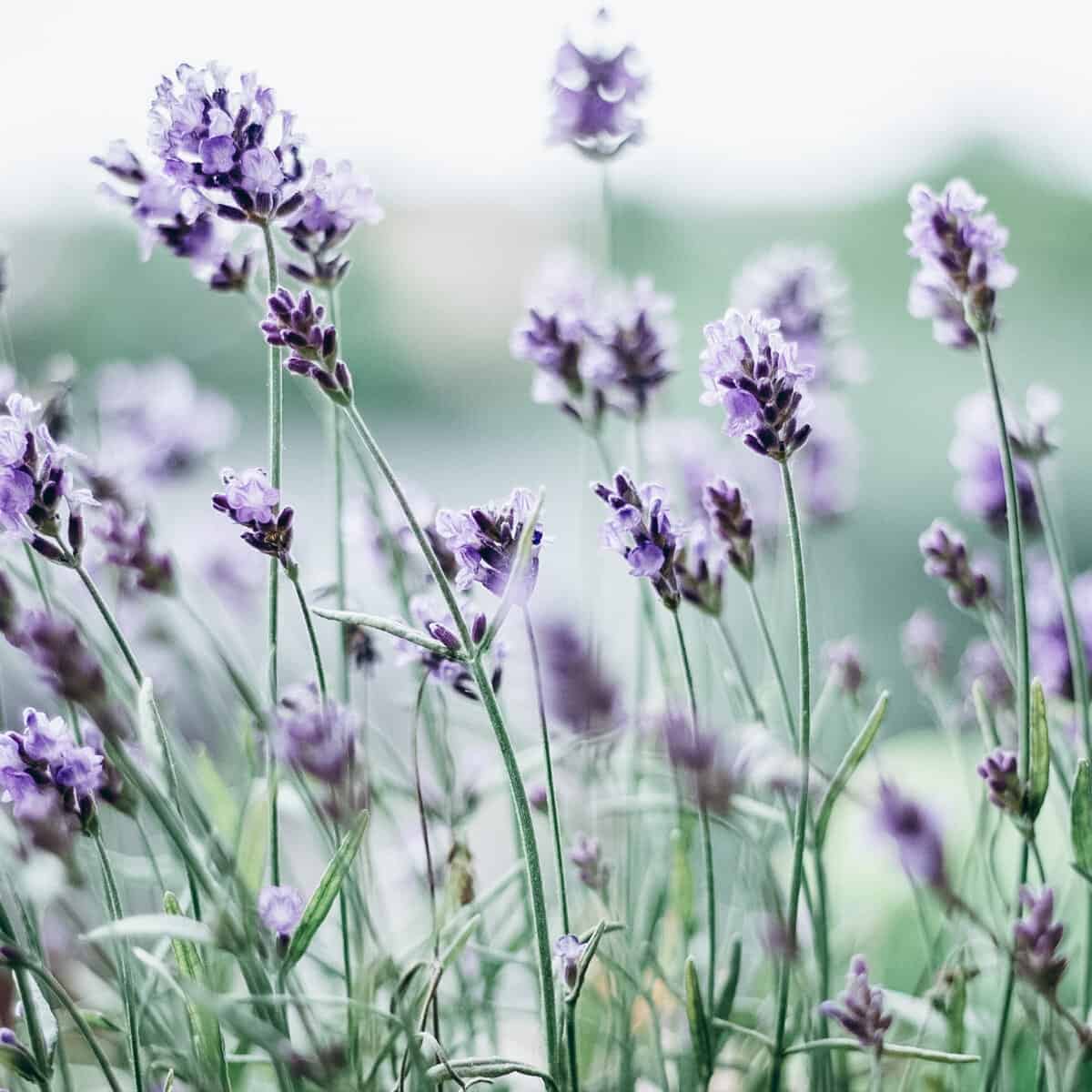The Best Edible Fowers For Cocktails
Using edible flowers for cocktails is a fantastic way to add some flair. Whether you're curious about simply placing one safely for a garnish or using a flower's rich flavor and health benefits in your drink, this comprehensive guide will help you choose the best edible flowers for cocktails.

Flowers are such a versatile ingredient that is often overlooked for their unique flavor properties. Don't worry about being limited by the season. There's plenty of floral flavor to go around all year long.
Fresh edible flowers from your own garden may be impossible based on wherever you live in the world. However, there are several different ways to preserve flowers for culinary use. You can make simple syrup, floral sugar, floral ice cubes or press pansies for year round use.
Best flowers for cocktails based on their flavor:
These flowers have pronounced and distinct flavors which make them ideal for syrups, sugars and waters to enhance your drink.

lavender
- Lavender (Lavandula angustifolia) – Sweet, floral flavor, with lemon and citrus notes. Lavender is very popular and easy to source. It's flowers look beautiful and taste good too in a glass of champagne, with chocolate cake, or as a garnish for sorbets or ice creams. Lavender lends itself to savory dishes also, from hearty stews to wine-reduced sauces. Diminutive blooms add a mysterious scent to ice cream, cookies, cakes, frostings, cocktails and more and more.
Try a: Lavender bee's knees or Lavender gin & tonic

rose
- Rose (Rosa rugosa) - The flavor of these flowers is reminiscent to that of strawberries and tart green apples. Darker varieties have a more prominent taste than their lighter counterparts, but almost all roses are edible. Rose flavor is very popular in parts of Asia and in the Middle East, and you'll be able to make rose water easily at home, or find it in your local grocery store.
Try: 10 rose water cocktails or rose gin & tonic

chamomile
- Chamomile (Chamaemelum nobile) - Chamomile tastes light and fresh with just enough floral notes to make it interesting. There is also an earthy undertone as the base, which gives this drink its complexity for those who enjoy exploring different tastes in their drinks or want something different.

alnise hyssop
- Anise hyssop (Agastache foeniculum) - Anise hyssop flowers are often used to make herbal teas, tinctures or salves because of their strong "medicinal" flavor. They emit an aroma that closely resembles mint and licorice with an unexpected sweetness. You either love it or hate it. We love it!

lilac
- Lilac (Syrringa vulgaris) - Very fragrant floral taste, beautiful candied or infused in honey. Lilacs likely won't be sold organically for consumption, sho they're best to grow. They are low-maintenance shrubs. Lilacs offer good summer shade after they have reached several feet tall. Lilacs can be used for anything from a beautiful syrup to a delicious dessert garnish. The best place to plant lilacs is near an entertainment area so they can add color and fragrance, but far enough from power lines and water piles so they can grow to their full potential over several years.

elderflower
- Elderflower (Sambucus) - The elderflower has a slightly herbaceous flavor that's not too strong, but it does add some depth to the drink. It's smooth and sweet combined, which makes it a perfect palette-cleansing flavor in a drink after a meal.

jasmine
- Jasmine (Jasminum) - Jasmine has an interesting flavor profile. It's found worldwide in many cuisines and is considered very palatable but complex and difficult to compare with anything else. It's fragrant with a delicate and sweet taste. One of our absolute favorites. You will love it in our Jasmine greyhound.

honeysuckle
- Honeysuckle (Lonicera periclymenum) - Gorgeous with a sweet honey flavor. Only the flowers are edible, avoid the berries which are poisonous.

evening primrose
- Evening Primrose - A very strong floral flavor and gorgeous aroma. Best for true edible flower lovers!

orange blossom
- Orange blossom - The taste of orange blossom is unique, with a strong but aroma that smells more like fresh flowers than fruit. The flavor itself can be compared to lighter versions of traditional oranges combined with jasmine.
Best flowers to garnish a cocktail with:
Nothing better than a flower garnish
borage
- Borage (Borago officinalis) – Has lovely cornflower blue star-shaped flowers. Blossoms and leaves have a cool, faint cucumber taste. Wonderful in punches, lemonade, gin and tonics, sorbets, chilled soups, cheese tortas, and dips. I garnish everything with borage. You will love this cucumber borage gin and tonic!

- Rose petals (Rosa rugosa) - Rose has a gorgeous distinct flavor, but it's strong and whimsical petals make it the most beautiful garnish. Add a candied rose petal on top of your champagne.

- Chrysanthemums (Chrysanthemum coronarium) – The variety of colors and tastes make this flower an ideal addition to any dish. With mild peppery notes, - it's easy to love! Use the leaves in vinegar for a different take on salad dressing that is sure not be missed at your next dinner party. Mums are one of the most popular perennials for the garden.

- Lavender sprig (Lavandula angustifolia) Lavender ha? great floral flavor but also makes the prettiest garnish!

- Tulip Petals (Tulipa) –The delicate, yet powerful petals of the flower are what make it so unique. The taste has an appealing flavor like sweet lettuce. They are gorgeous as bowls in our Tulip salad.

- Hibiscus (Hibiscus rosa - sinensis) - Mild fruity bitter flavor, beautiful in salads and cocktails. flower is an edible tropical flower that's also beautiful. Floral tea from these flowers is delicious, and they are a lovely garnish for cakes. Zones 5 and 6 gardeners can add this edible flower to their garden as a great option.
- Fire feathers -The fire flower is an amazing and beautiful edible blossom. With vibrant hues that range from orange, red yellow pink this plant can be used in many dishes to add colour! A stem with flowers on top are perfect for stews soups seafood sandwiches vegetables platters desserts fruit plates or just as decoration at your next event
Best for adding a pop of color:

Butterfly pea - Butterfly pea flower is responsible for the magical color changing cocktails. So what makes butterfly pea flowers change color? It turns out that the rich, sapphire blue color of tea made from these flowers is due to it's antioxidant property anthocyanin, which give the plant its naturally vibrant hue. But when exposed to pH changes like those found in lemon juice or baking soda (both common household ingredients), they transform into vibrant magenta color. You'll love this Butterfly pea flower cocktail!
Floral waters:

Floral waters are easy to source and make at home if you have access to organic flowers. They are probably the most simplest way to add a splash of floral flavor to a drink. See our post on rose water cocktails for inspiration.
Basic rules of edible flowers:
A little knowledge goes a long way towards ensuring your health and that of others, so make sure to read through these important precautions before consuming any type of edible flower.
- Not all flowers are edible. Even simply garnishing a dish with a flower that is not edible can make you very ill. Be sure you have properly identified your plant before consuming. If you are foraging in nature, use a plant identification app, which helps people identify harmful vs harmless plant species so they don't get sick from trying new things while hiking through nature. Identify the flower exactly and eat only edible flowers and edible parts of those flowers.
- Most store bought flowers are not safe for consumption. The type of flowers you plan to use for food should never come in contact with pesticides or other chemicals. The best edible flowers are ones you grow organically in your garden. The exception is the very seasonal food grade flowers sold in your local grocery store, more on this below.
- Never harvest flowers growing by the roadside, chemically treated lawns, or areas with lots of animals.
- If you haven't tried a particular flower in culinary uses, taste a small piece of the petal before consuming a whole petal. You can be allergic to flowers. Use flowers sparingly in your recipes due to the digestive complications that can occur with a large consumption rate.
Frequently asked questions
Where can I find edible flowers to try?
I've created a whole guide to help you! Read here for ALL of the places you can safely sourcing edible flowers, and here is a page I created for edible flowers from amazon.com
Love edible flowers? These resources may be useful to you!
- Ways to use edible flowers
- Popular edible flowers chart and their meaning - printable chart
- How to store and preserve edible flowers
- Edible flowers to grow in your garden
- Where to buy or find edible flowers for cookies and cakes
As always, thanks for reading!







